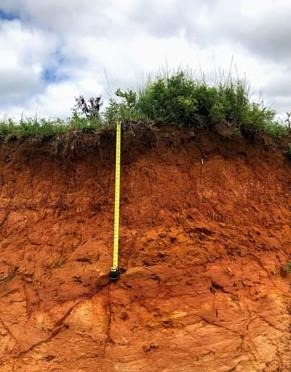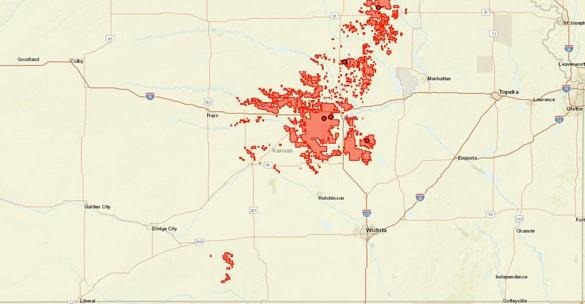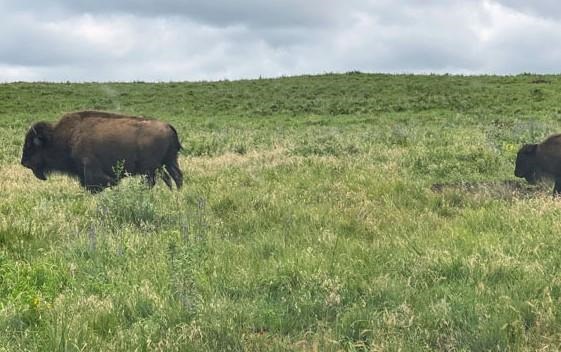By DeAnn Presley
As every Kansan probably knows, the song “Home on the Range” was adapted from a poem written by Brewster M. Higley in Smith County, KS. A recent visit to the Maxwell Wildlife Refuge, located near Canton, KS, to see bison and wildflowers turned into a quick soil-exploration opportunity to see a vibrant soil called the Lancaster soil series.
For the Lancaster series, what’s so very eye-catching are the bright red colors, which are caused by excellent drainage promoting the oxidation of minerals (Figure 1). Why is this soil so well drained? The answer lies in its parent material; it is formed from sandstone and sandy shales. The Lancaster series formed under prairie vegetation, and has some rugged hills, making this series best suited for rangeland. Lancaster soils are found on hillslopes on uplands in central Kansas (Figure 2). The Maxwell Wildlife Refuge, where these photos of the Lancaster series were taken, is grazed by a herd of state-owned bison kept for breeding purposes (Figure 3).

Figure 1. Lancaster soil series, McPherson County, KS. Photo by DeAnn Presley, K-State Research and Extension.

Figure 2. Soil series extent map for the Lancaster soil series in Kansas. This soil can be found on over 390,000 acres in central and north central Kansas. Map created using USDA-NRCS Official Soil Series Description website.

Figure 3. Ironically, the skies were in fact cloudy on this particular day but no discouraging words were heard. Photo by DeAnn Presley, K-State Research and Extension.
According to the city of Canton’s website, “The Maxwell Game Preserve which opened to the public in 1951 was established because of a provision in the will of the late Henry Irving Maxwell dictating that the bulk of his estate be used for the benefit of the public. He instructed the handler of his property to buy not less than three nor more than six sections of land, suitably improve it and stock it with buffalo, antelope and deer, prairie chicken and quail.”
Source : ksu.edu